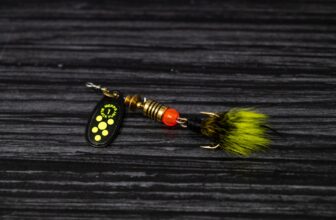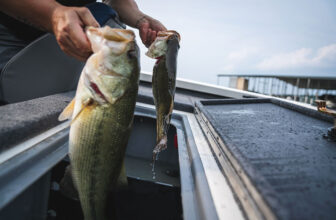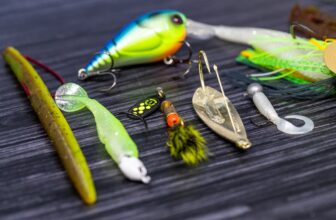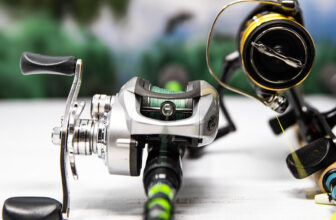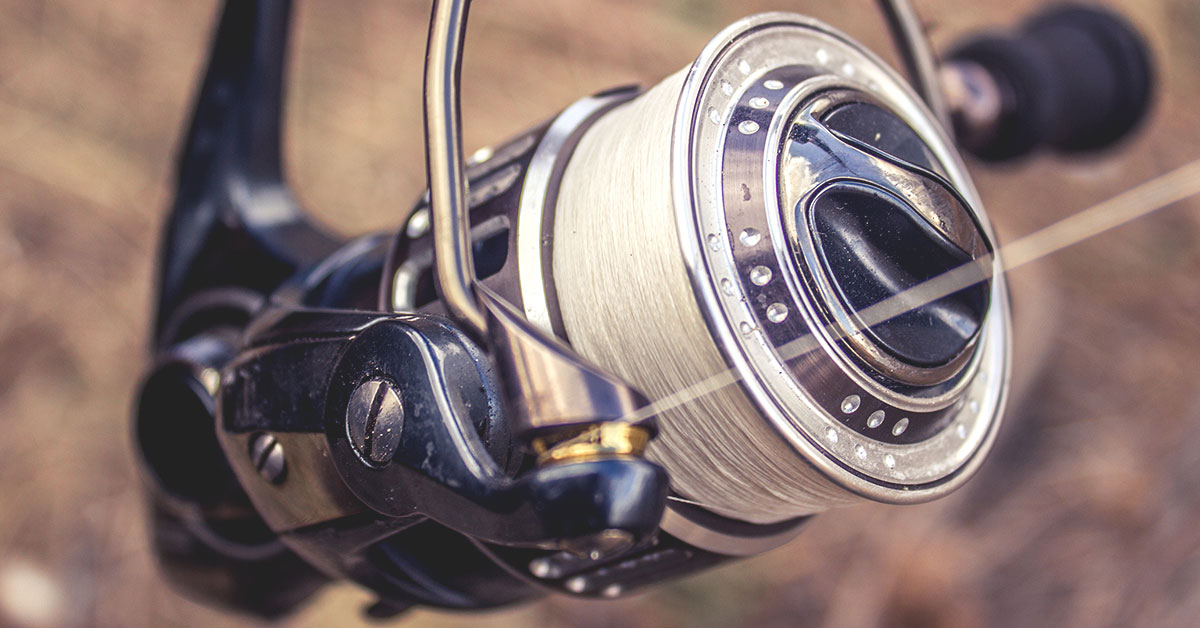
Who knew there was so much involved when it comes to learning about the different types of fishing line? Some people have been fishing most of their life and aren’t even aware of the differences between fishing lines, let alone what the ideal situation for using each one is.
Fishing line is as diverse in its application as the lures you choose to go with and knowing the differences between the three kinds of lines will give you the upper hand this season for any situation you may find yourself in.
In order to make sure I cover all of the bases here, I am going to describe each type in detail as if you’ve never cast a single line in the water and then I’m going to cover the ideal situation for their application.
- Types of fishing line
- Best line for baitcaster
- Best line for spinning reel
- Best all around fishing line
Types of Fishing Line
Although there are three different types of fishing line, each one comes in varying strengths and colors to match any situation you as an angler may encounter. Regardless of the lb. test and color, every material behaves in a manner specific to that type of line.
Monofilament Line
Monofilament fishing is a single strand of line, unlike other fishing lines that are made with multiple different fibers braided together. Mono is made from a mixture of melted plastic polymers, usually in the form of nylon, and is manufactured by extracting the melted mixture through appropriately sized holes for the desired size and test.
Mono is easily the most user-friendly fishing line out there because it is easy to handle and it’s cheap to purchase. Another appealing property of monofilament for beginners is that it stretches easier than any of the other materials on the market. This added stretching allows for increased forgiveness when setting the hook after a hard strike or getting your hook hung up on something.
Another user-friendly property of this type of line is the ease with which it can be tied. Simple knots hold very well in mono line which isn’t necessarily true when it comes to the other types of line.
Like every other line, mono has its disadvantages as well. One of the main drawbacks to a monofilament line is that they tend to be thicker in diameter than other types of lines. This makes it hard to fish a lure deep in the water because the lines prevent it from sinking – on the contrary it makes it a great choice for topwater fishing.
Fluorocarbon Line
Fluorocarbon line was first invented in 1971 and was often tied onto the end of a stronger braided line as a leader. Developments have been made since the original conception and these developments make fluorocarbon line a great choice for any application.
This style of line is manufactured in much the same way as monofilament line but the compound that is used is much more dense than mono. It’s this exact density that gives fluorocarbon line its main appeal.
When it comes to the benefits of fluorocarbon the main one is the fact that it is practically invisible under the surface of the water. This makes it a necessity when sight-fishing those crystal clear waters filled with skittish fish.
Another benefit of its transparent properties is that it allows you to up your lines test without sacrificing the levels of visibility.
Fluorocarbon line does tend to be more expensive especially when compared to monofilament lines but it lasts much longer. Much like its transparent properties, this long-lasting life can be attributed to the density of the compound used for manufacturing. Unlike other types of lines, fluorocarbon is waterproof and more resistant to abrasion.
One of the most sensitive lines, fluoro provides a solid connection between you and the fish with little to no stretch which means you feel every hit as you reel in. Its low stretching ability allows for solid hooksets every time
Braided Line
One of the more versatile of the different types of fishing line, raided fishing line dates back centuries and was one of the earliest recorded ways of rod fishing. Originally braided line was crafted from plant fibers twisted into threads and braided together. In today’s manufacturing synthetic manmade materials are used, but they are ultimately threaded and braided together in much the same way.
This is one of the strongest fishing lines available and unlike monofilament or fluorocarbon lines, braided line offers no stretch. This inability to stretch offers an unmatched sensitivity that you can only achieve through using braided fishing lines.
Sensitivity offers increased control when you’re fishing by transferring vibrations to your reel no matter what your lure hits, or more preferably, what hits your lure. While some people prefer this added sensitivity at the cost of stretching capabilities, others would rather lose some sensitivity for the added forgiveness that comes along with a little stretch.
The inability to stretch means that this type of line isn’t the best when it comes to handling monster hits caused by hard-fighting bass and solid hooksets. Mono and fluoro lines relieve some of the sudden stress that the line experiences which generally makes it easier to keep a fish hooked.
Another major drawback of braid is that the thinness of the line offers little to no resistance against abrasion when coming in contact with rocks or other rough underwater cover.
Some anglers prefer to have the best of both worlds and opt to spool their reel with a braided line and add a leader made of a stretchier harder to see line like mono or fluorocarbon.
Best Line for Baitcaster
Baitcasting reels are the most common reels used for bass fishing due to their supreme castability and unmatched lure control. They make it easier to get into thick cover so you can get that lure right where the big ones are. With increased control comes an increase in the difficulty of casting one of these reels.
If you are new to using baitcasters then I highly suggest using a mid-grade test monofilament line. Mono is easier to control which makes it a good line to use when learning. Don’t get used to it though because when you’ve got your casting down it’s time to re-spool your baitcaster with something different.
Myself and many others preferred line to throw on a baitcasting reel is a braided line. Braid is my pick for the best line for baitcaster and offers added control to the already high level of control offered by using a baitcaster in the first place. I do prefer to compensate for the braided line’s high visibility when using a baitcaster though and I do this through the use of a fluorocarbon leader as mentioned above.
Best Line for Spinning Reel
Your best line for spinning reel setups with is without a doubt a braided line. A close second would be a fluorocarbon line, and even though it would work, a monofilament line is never the right call for a spinning reel.
The reason monofilament line shouldn’t be used on your spinning gear has to do with the amount of line a spinning reel can hold, and the line’s tendency to hold the curl that the spool has given it.
Monofilament tends to be thicker than braid, so in order to hold more line on the spool, you have to sacrifice tensile strength. The other big drawback is what is referred to as the memory of the line – mono has high memory and stays curled up which can lead to your reel bird-nesting more often.
Braided line is perfect for spinning gear because it has no line memory, and it’s super thin which allows you to hold a higher test line and a lot more of it. Braid does have higher visibility underwater but this can be compensated for by using a lower vis line for a leader-fluorocarbon being the best choice in this situation.
Best All Around Fishing Line
I wish there was a one size fits all answer to what the best type of all around fishing line is, but unfortunately, there’s just not. I have my preferred line, as do most other anglers, but ultimately it comes down to personal preference and what kind of fishing you find yourself doing most often.
As always I recommend beginners who are starting out with any kind of reel to start with a cheap reliable monofilament line. This is the most forgiving type of fishing line and it’s the easiest one to control. It’s the jack of all trades when it comes to fishing lines and while not superior in any category it remains fair in all.
For more experienced anglers, or people that just want to start out working the best setup I recommend going with a braided line with a mono or fluoro leader. This is the hardest line to work, but it offers unmatched control and sensitivity so you can get your lure wherever the bass may be, and trigger them to strike.
In the end, the only best fishing line is the one that works the best for you.



